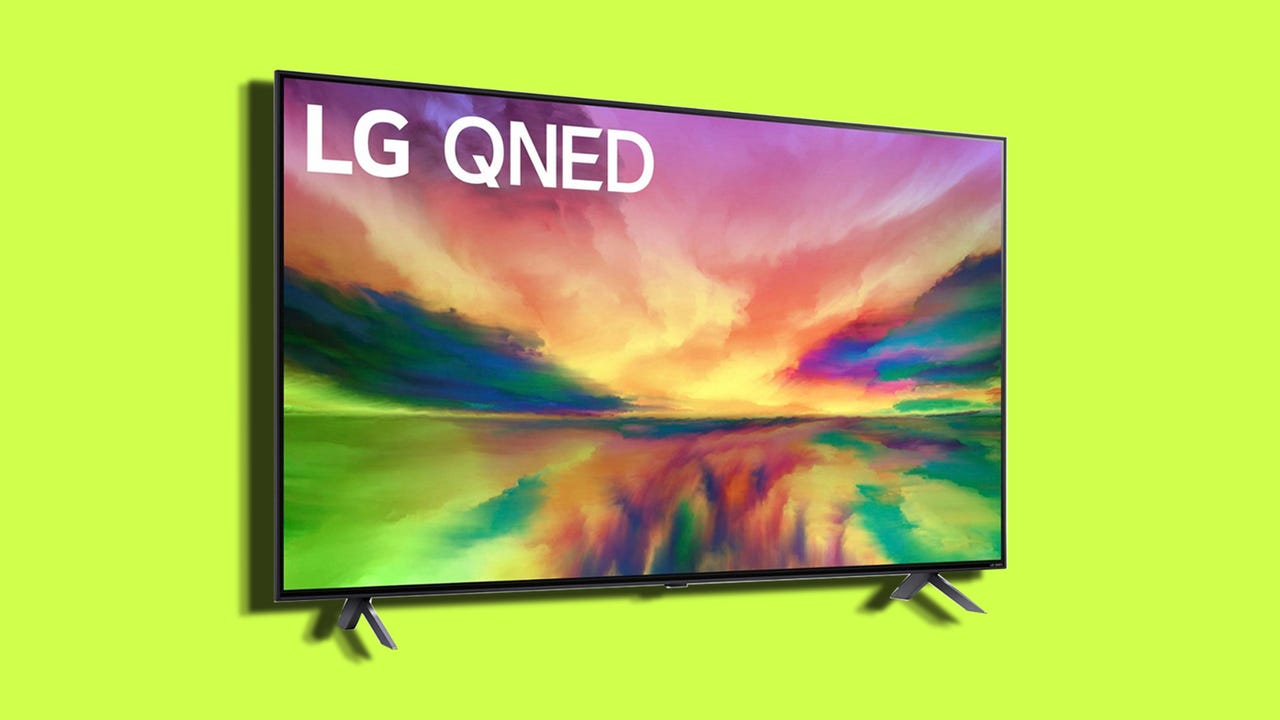'ZDNET Recommends': What exactly does it mean?
ZDNET's recommendations are based on many hours of testing, research, and comparison shopping. We gather data from the best available sources, including vendor and retailer listings as well as other relevant and independent reviews sites. And we pore over customer reviews to find out what matters to real people who already own and use the products and services we’re assessing.
When you click through from our site to a retailer and buy a product or service, we may earn affiliate commissions. This helps support our work, but does not affect what we cover or how, and it does not affect the price you pay. Neither ZDNET nor the author are compensated for these independent reviews. Indeed, we follow strict guidelines that ensure our editorial content is never influenced by advertisers.
ZDNET's editorial team writes on behalf of you, our reader. Our goal is to deliver the most accurate information and the most knowledgeable advice possible in order to help you make smarter buying decisions on tech gear and a wide array of products and services. Our editors thoroughly review and fact-check every article to ensure that our content meets the highest standards. If we have made an error or published misleading information, we will correct or clarify the article. If you see inaccuracies in our content, please report the mistake via this form.
I tested LG's entry-level QNED80 TV and was not prepared for it to be this good

ZDNET's key takeaways
- Starting at $599, the QNED series of TVs from LG packs some very impressive visuals in an affordable package.
- I was particularly impressed with the spatial audio, which mimics a full surround system without the need for a soundbar or subwoofer.
- If you're looking for a relatively affordable TV that handles everything from gaming to movies and will adapt to nearly any environment, this is the model I'd recommend.
If you're not familiar with a QNED TV, it stands for Quantum Nano-Emitting Diode, and is essentially LG's term for QLED, a set that uses quantum dots to display a better picture than comparable sets. And even though the QNED80 is the entry-level in LG's series of QLED sets, I've been very impressed by its performance for the money - after testing it over the past month.
Also: I saw Samsung and LG's new transparent TVs at CES, and there's a clear winner
The QNED 80 Series is available in 50-inch, 55-inch, 65-inch, 75-inch, and 86-inch versions, so most preferences for screen size are covered. As for the pricing, that starts at $599 for the smallest 50-inch model and maxes out at $1,799 for the largest option. For this review, I tried out the 55-inch.
View at Best BuyOut of the box, I noticed the TV had a simple, clean design. The bezel around the edge is a standard size, nothing ultra thin like the ones you'd see on the CES show floor but slim enough to not be a bother. The legs, if you choose to not mount it on a wall, blend in well overall, and it's thin enough that if you choose to wall mount, it'll sit relatively flush. Nothing immediately jumps out design-wise, but the QNED80 model certainly doesn't look cheap either.
Turning to the back of the set, the usual input standards are present; two USB and four HDMI (a mix of 2.0 and 2.1). A small downside here is that one of the HDMI 2.1 ports is the ARC port, meaning that's where your sound bar will need to go if you have one. So if you have two devices you want to utilize HDMI 2.1, say an Xbox Series X and a PS5, plus a sound bar, you'll only be able to have one console plugged in at a time unless you forgo the HDMI 2.1 features on one of them.
Once the set was up and running, I was introduced to LG's "Magic Remote," which utilizes a moving pointer that you control by waving the remote along with voice controls or traditional buttons. I found myself not liking the motion control at first because I couldn't line up my movements with the pointer on the screen, but I quickly discovered that was the entire point.
Also: LG's newest OLED TVs will use AI to look and sound better than ever
You don't even have to point the remote directly at the screen -- it can be pointed at the floor as your arm sits on the couch, at the ceiling, or even in the complete opposite direction. Once I got accustomed to that, I found myself liking it and missed it when I went back to my regular TV.
The Magic Remote has a subtle curvature that makes it very comfortable to use.
The QNED model I tested runs on the a7 Gen5 AI Processor, which follows the trend in televisions of late and uses AI to boost both picture and sound quality. LG's own WebOS is the operating system, and while I haven't had too much experience with it, I found the interface fairly easy and quick to use. My favorite apps were easy to access, as were the TV settings, which everyone always spends too much time on.
My living room has a lot of natural light spilling in from the side, plus an overhead ceiling fan that throws a harsh glare on my normal TV set, so much so that it can get distracting at times. While the QNED80 isn't the brightest TV I've seen, when I fired up my first piece of content, I was struck by how much better it handled these conditions, minimizing the glare and displaying a pretty solid picture from nearly any angle.
Also: LG's new CineBeam Qube is a 4K projector that's unlike anything I've ever seen
Overall, I found 4K and HDR content more impressive than a lot of TVs I've seen. It wasn't the highest of high-end quality, of course, but this isn't necessarily designed to compete with the $2,000 and up premium televisions. Even without tinkering with the settings, colors popped when they should and blacks took on an inky darkness that even fans of the Game of Thrones finale could appreciate.
LG says the QNED80 TV does have a local dimming option, which claims to increase contrast by making certain LED zones brighter or softer than those surrounding it. I appreciate the option to turn it on or off, as I noticed a little blooming in certain dark scenes, or backlight bleeding into other things on screen and creating a soft halo of light. This only happened in especially dark scenes, while also watching in the dark, so I'd usually leave the feature turned on unless I wanted to immerse myself in a movie.
On the sound front, the LG QNED80 TV takes advantage of Dolby Atmos, combined with AI to produce 3D spatial sound or audio that's 2-channel but mimics 5.1.2 surround sound. Simply on volume, this set impressed me right away.
On my everyday TV, I need a sound bar to make sure I can hear above the noise of my two kids and dog, and I keep closed captioning on to make sure I don't miss any dialogue. That wasn't necessary here, as the dialogue on TV shows came through loud and clear. Audio did begin to get muddy at a high volume, but that was a much higher volume than I'd ever use.
Also: First look at the new LG soundbars being unveiled at CES 2024
When I pulled up content that used Dolby Atmos, I was surprised by how well the TV pulled off the immersion. LG claims that the QNED can adjust the sound for the specific layout of the room it's in, and I truly did get a surround sound feeling when it was in full effect -- an experience I wasn't expecting with no sound bar or extra speakers in sight.
ZDNET's buying advice
In the end, the LG QNED80 is a television that punches way above its weight. It's not the absolute best set for watching movies or the very best for gaming, but if you're looking for a TV that's flexible enough to take you from playing the latest game to watching movies to binging your favorite show and doing all of those things very well -- with no extra speakers and accessories necessary -- it would be hard to find a better option than this.
